The Arkansas Lifeline program trims the cost of phone or internet service for low-income households. That’s the headline, and if you’ve ever stared at a phone bill and wondered how you’d pay it, you know why it matters.
You might be living in Pine Bluff, or maybe outside Searcy where signal’s patchy and the budget’s even patchier. The government’s rules on Lifeline are strict, but they’re not impossible to follow, if you know what to expect.
Key Takeaways
- Only one Lifeline discount is allowed per household, and benefits can’t be transferred.
- You have to use your Lifeline service at least once every 30 days and recertify your eligibility each year.
- Clear documentation, whether for income or participation in a qualifying program, is required for both application and recertification.
Arkansas Lifeline Program Rules and Usage Guidelines
The federal Lifeline program helps low-income Arkansans keep their phones on and their internet working. The Arkansas Lifeline program works like a safety net for communication, set up with rules that can trip up the unwary if you don’t pay attention. There’s no secret handshake. Just a set of rules that you need to follow, starting with the basics.
One Discount Per Household Policy
This rule is simple, but it trips up families who think they can stack discounts. The Lifeline program strictly allows just one discount per household, whether for a landline or wireless phone or for home internet.
So, if your aunt in the same house tries to sign up separately, only one of you will get approved. The reason? The government wants to spread the benefit as widely as possible, not double up in the same home. [1]
Remember:
- “Household” means everyone who lives at your address and shares finances.
- If two unrelated people share a home but keep their finances separate, you’ll need to fill out a Household Worksheet to prove you’re separate households.
Non-Transferability of Benefits
You can’t pass your Lifeline benefit to your cousin, even if he qualifies. Lifeline is tied to the individual and their household, not the phone or account. So, if you move out, you can’t leave your Lifeline discount behind. And if you drop out of the program, you can’t give your spot to someone else.
Primary Residence Requirement
The Lifeline discount applies only to your main residence. That means no using your cousin’s address in Little Rock just because your reception is better over there. The address you use must be your actual home, and if you move, you have to update your provider, fast.
Service Usage Requirement
This one’s easy to forget: you have to use your Lifeline-supported service at least once every 30 days. A call, a text, checking voicemail, or even a bit of data use will count. If you forget and go longer than a month, your provider will try to reach out. Ignore them, and you’ll lose your discount. It’s a way to make sure the funds help people who actually need and use the service.
Minimum Usage Frequency
To be clear, you don’t need to use the service every day, just once a month. Most people don’t have to think about this, they call their kids, check on a job, or text their doctor. But for the elderly or folks who rarely use their phone, this rule can sneak up.
Annual Recertification Process
Every year, you have to prove you still qualify. It’s not automatic. Your provider will notify you when it’s time to recertify. If you miss the deadline or don’t supply the right documents, your Lifeline discount stops. Some folks say it feels like paying taxes, only with phone bills.
Reapplication and Eligibility Restoration
If you lose eligibility, maybe your income goes up, or you forget to recertify, you can reapply at any time. There’s no penalty for dropping out and coming back, as long as you meet the requirements again. This flexibility is a relief for many, especially those with seasonal jobs or changing circumstances.
Application Process and Documentation
Credits: Payette Forward
Getting approved for Arkansas Lifeline can feel like a test in paperwork. But the process is straightforward if you know what documents to gather and where to send them. [2]
Methods of Application
You have three choices:
- Apply online through the National Verifier website.
- Download a paper application and send it by mail.
- Apply directly with a participating wireless provider (like Assurance Wireless or SafeLink).
Each method has its quirks, but the requirements are the same.
Online Application
Most people choose this route for speed. The National Verifier website walks you through each step, asking for documentation uploads (PDFs, photos, or scans). You’ll need an email address and a way to take clear pictures of your documents.
Mail Application
Some folks still prefer paper. You print the application, fill it out, and mail it with copies of your documents. This method takes longer, and if you miss a section, you might get denied, or worse, just never hear back.
Application Through Service Providers
Some providers offer in-person help. You can visit their offices or authorized retailers, where staff can walk you through the paperwork and make sure you have what you need. This can be helpful for seniors or those without internet access.
Required Documentation for Income-Based Applicants
If you’re applying based on income, you’ll need to show your household makes at or below 135% of the Federal Poverty Guidelines. Acceptable documents include:
- Prior year’s tax return (state, federal, or tribal)
- Three consecutive months of pay stubs
- Social Security statement of benefits
- Veterans Administration statement of benefits
- Unemployment or Workers’ Compensation statement of benefits
Be sure your documents are recent and clear. Providers will reject fuzzy photos or outdated paperwork.
Required Documentation for Program-Based Applicants
If you or someone in your home gets benefits from Medicaid, SNAP, SSI, Federal Public Housing Assistance, or Veterans Pension, you qualify automatically. You’ll need:
- An official letter of participation dated within the past year
- A current benefit statement
- A screenshot from an online benefits portal
Make sure your name and the program are both visible, and the date is recent. Some applicants get tripped up by sending old documents or ones that don’t show their address.
Tips for Successful Application Submission
From experience and talking with neighbors, three things help most:
- Double-check that names and addresses match across all documents.
- Submit clear, legible copies, no shadows, no blurs.
- If you apply online, check your email daily for follow-up requests from the National Verifier.
Most denials come from missing or mismatched documents. Take your time and keep copies of everything you send.
Additional Support and Program Updates
The Lifeline program isn’t static. Each year, there are tweaks, sometimes small, sometimes big enough to change how you qualify or what you get.
Affordable Connectivity Program (ACP) Overview
Many Lifeline users now qualify for the Affordable Connectivity Program (ACP), which helps further reduce internet bills. You can receive both benefits at the same time, but the ACP covers internet only, while Lifeline can cover phone or internet. Combining both can mean a nearly free phone and a steeply discounted internet plan.
Recent 2025 Program Enhancements
In 2025, the program’s budget increased and service standards improved. What does this mean? More funding for wireless providers, and higher minimums for monthly data and voice. For example:
- Wireless plans must now include unlimited texts and at least 4.5 GB of data.
- More providers are offering smartphones, not just basic flip phones.
- Internet speeds for Lifeline-supported plans are now higher, based on FCC guidelines.
Increased Program Budget
The expanded budget means more Arkansans will be able to enroll, and providers might offer better devices or additional support.
Updated Service Standards
Wireless providers now have to meet higher standards for reliability, coverage, and minimum data. This reduces the “dead zone” problem in rural areas and improves service overall.
Combining Lifeline with Other Assistance Programs
You can stack Lifeline with other benefits, like Medicaid or SNAP. If you lose one program but qualify for another, you don’t lose Lifeline. This flexibility helps families with changing circumstances.
Practical Advice: How to Keep Your Arkansas Lifeline Discount

If you want to keep your Lifeline discount working month after month, here’s what people in the know suggest:
- Use your phone at least once every 30 days, even if just to check voicemail.
- Mark your calendar for recertification so you don’t miss the deadline.
- Keep copies of your application and all documents.
- If you move, tell your provider right away and update your address.
- Apply for both Lifeline and the Affordable Connectivity Program if you qualify. Double savings.
FAQ
What happens if more than one person in a household applies for the Arkansas Lifeline program?
The Arkansas Lifeline program is limited to one benefit per household. That includes either a Lifeline landline discount or a Lifeline wireless discount, not both. If two people at the same address apply, their applications might get flagged.
The FCC requires Lifeline eligibility Arkansas checks to verify the one-per-household rule. If you live with unrelated roommates, you may still qualify individually, but you’ll need to submit extra Lifeline documentation.
Are Arkansas residents on Tribal lands eligible for additional Lifeline benefits?
Yes, Lifeline Tribal benefits offer more support. Besides the monthly Lifeline discount, eligible Tribal residents may also qualify for the Link Up installation discount. This can help with activation fees for Lifeline wireless providers or home service.
Tribal benefits apply if you live on federally recognized Tribal lands in Arkansas and meet Lifeline program requirements. Proof like a Tribal ID and address verification is required during the Lifeline application process.
How does the Lifeline recertification process work in Arkansas?
Every year, Lifeline participants must complete a Lifeline annual renewal. This process checks if you still meet Lifeline income requirements or still participate in qualifying Lifeline assistance programs like SNAP, Medicaid, SSI, or Veterans Pension Lifeline.
The Arkansas Lifeline program usually sends a notice before the recertification deadline. If you miss it, your Lifeline phone service could be suspended. Lifeline recertification can be done online, by mail, or through your Lifeline service providers.
What counts as proof of income for the Arkansas Lifeline application?
To meet the Lifeline income verification rules, you’ll need clear documentation. Acceptable Lifeline proof of income includes tax returns, pay stubs, or benefit statements from programs like SSI Lifeline or Federal Public Housing Assistance.
If your household income is below the Lifeline federal poverty guidelines, you must provide current, detailed proof when completing the Lifeline online application or Lifeline mail application. The Arkansas DHS can also guide you if you’re unsure which documents count.
Can I switch Lifeline providers in Arkansas without reapplying?
Yes, you can change Lifeline wireless providers or switch to Lifeline landline service in Arkansas without starting the whole Lifeline application process over. However, the Lifeline program Arkansas rules say you can only transfer your Lifeline benefit once every 30 days.
Your new provider must operate in your Lifeline service area. Be ready to submit identification and your current Lifeline benefit statement during the transfer. The Lifeline benefit is non-transferable between people, only services.
Conclusion
If you qualify for the Arkansas Lifeline program, don’t wait to apply. Most people who lose their Lifeline benefit do so because of paperwork issues or missed deadlines.
Arkansas phone companies and the Arkansas Public Service Commission can help, but it’s easier to stay on track from the start. Free Government Phone by State has a full guide to help you avoid common mistakes.
Apply today through Free Government Phone by State.
References
- https://www.lifelinesupport.org/program-rules/
- https://www.lifelinesupport.org/documents-needed/


